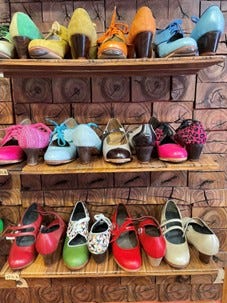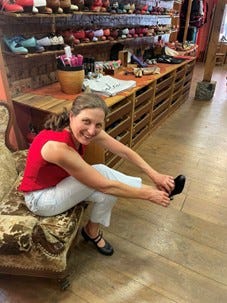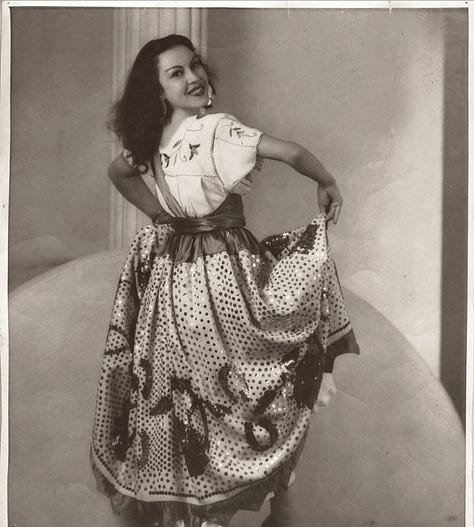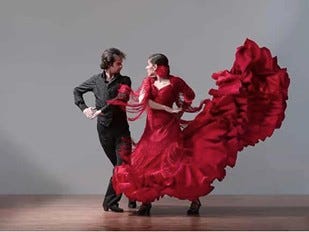(Since I’m traveling throughout March and won’t have much time to write, I’ve recycled some of the posts from 2023 and pre-Substack. They’ll be new to many of you faithful, kind readers.)
My sister, Nevill, came to visit me in Madrid after attending a weeklong flamenco workshop in Granada. She has been dancing flamenco in classes, workshops, and shows in her hometown of Portland, Oregon for decades. So what else could we do in Madrid but see a flamenco show and go shopping shopping shopping for dance shoes?



Nevill saw flamenco the first time in her early twenties when she came to Spain on a study abroad program. Immediately, she decided to learn the dance. She loved the music, rhythm, and constant learning and challenge. Listening to her describe her experience, I realized she could be talking about writing. “You always have that ‘aha’ moment of ‘oh, that’s how she/he did that’ and ‘oh, I can change my body (sentence structure) a little bit to make it look like that.” She’s surrounded by a supportive, kind dance community. Just like mine for writing.


One’s soul turns inside out listening to flamenco—the song, dance, and instrumental music (mostly guitar) that stems primarily from the Andalusian Roma (gitanos) of southern Spain. Men and women sing about love, life, and death. These are not unusual themes in any music or culture but in this case the lyrics come from the persecution of gypsies, Jews, and Muslims under the Catholic Kings, Queen Isabel I of Castile and her husband, King Ferdinand II of Aragón. This oppression continued long after their reign.
The rhythmic dancing evokes passion, love, sadness, despair, and joy. Women generally wear long, form-fitting black or red dresses, often with a polka dot pattern that came from the Roma’s moon-shape embroidery designs. Supposedly, the ruffle around the skirt derived from peasants’ and gypsy’s house robes they wore to do chores during the late 19th and early 20th centuries.
Learning flamenco is challenging because of the quick rhythm and simultaneous body parts going in different and not intuitive directions, clicking with castanets, foot stomping, and shawl twirling.


Nevill wouldn’t have to travel far from Portland to get to the capital of flamenco in the United States, Albuquerque, New Mexico. She could attend the National Institute of Flamenco, which is devoted to preserving and promoting the dance, and the annual Festival Flamenco Alburquerque, the largest festival like this outside of Spain. The University of New Mexico offers the only dance program in the world where one can receive a Bachelor of Arts and Masters of Fine Arts degrees with a concentration in flamenco. The dance craze started there due to Clarita Garcia de Aranda, a woman of Mexican descent, who ran a small studio in the 1950s. Her daughter went on to teach classes at the university. Fortunately, Nevill would rather visit me than register in one of numerous flamenco classes and schools in our home country.



Some of the great Spanish flamenco musicians are Camarón de la Isla and Paco de Lucia
Carmen Linares
and Tomatito
Olé, Nevill! Guapa! Put on those shoes and keep on stomping!




It's the CLAPPING I can't ever get over. It's so magical. Nice piece!
Great! I was surprised to learn of the Roma origins of the dance style, and the history behind its themes.